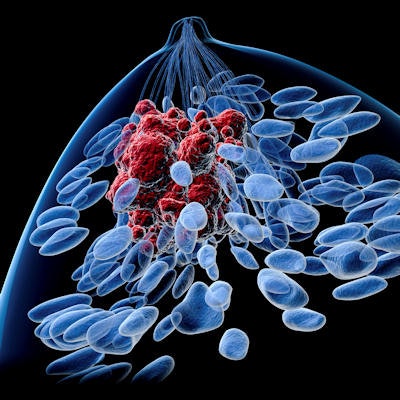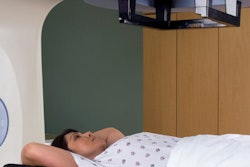
Supplemental screening breast MRI is underused by women at higher risk of breast cancer, according to a study published in the June issue of the Journal of Women's Health.
In fact, fewer than 7% of women eligible for the exam due to their assessed risk of the disease took advantage of the resource when they presented at facilities with screening breast MRI, wrote a team lead by Dr. Randy Miles of Massachusetts General Hospital.
"While nearly half of high-risk women attended a facility for screening mammography that also offered onsite breast MRI screening ... actual use of onsite supplemental MRI was low," the researchers wrote. "Only 6.6% of patients at high lifetime risk underwent screening breast MRI in our study."
It's unclear why supplemental breast MRI screening is underused among high-risk women, although the availability of the technology has been suggested as a possible factor, Miles and colleagues noted. The team sought to investigate not only the availability of MRI screening for women at high risk of breast cancer but also whether patient characteristics influence its use. "High risk" was defined as having more than a 20% lifetime risk based on the U.S. National Cancer Institute's risk assessment tool (J Womens Health, June 2018, Vol. 27:6, pp. 748-754).
The authors gathered data from six Breast Cancer Surveillance Consortium (BCSC) registries for 422,406 women who underwent routine mammography screening in 2012. They also tracked sociodemographic data associated with the use of onsite breast MRI screening.
Of the 422,406 women included in the study, 5,468 (1.3%) were at high lifetime risk of breast cancer. Of those at high risk, 43.9% (2,403) presented at a BCSC facility with available onsite breast MRI screening. But only 6.6% (158) of these women underwent screening breast MRI within a two-year window of their screening mammogram, Miles and colleagues wrote.
The researchers found that particular patient characteristics were associated with breast MRI screening use (with odds ratios higher than 1 associated with increased odds).
| Odds ratios associated with higher use of breast MRI screening | |
| Odds ratio | |
| Younger than 40 years of age | 2.39 |
| Some college education | 2.22 |
| Prior breast biopsy | 2.09 |
| Family history of breast cancer | 1.73 |
Women who had to travel an hour or more to a site with breast MRI were less likely to undergo the exam (37.7%) than women who had only 15 to 30 minutes of travel time (49.7%).
More research is needed as to why women at high risk for breast cancer aren't making use of supplemental breast MRI screening, according to the researchers.
"[Nearly] one-half of the high-risk women attended a facility offering onsite screening breast MRI," Miles and colleagues concluded. "However, despite its widespread availability, use of [the technology] remains low among women classified as having high lifetime risk. A better understanding of the sociodemographic determinants of breast MRI underuse is needed to guide novel interventions that target high-risk women who may benefit from supplemental screening."




.fFmgij6Hin.png?auto=compress%2Cformat&fit=crop&h=100&q=70&w=100)




.fFmgij6Hin.png?auto=compress%2Cformat&fit=crop&h=167&q=70&w=250)











